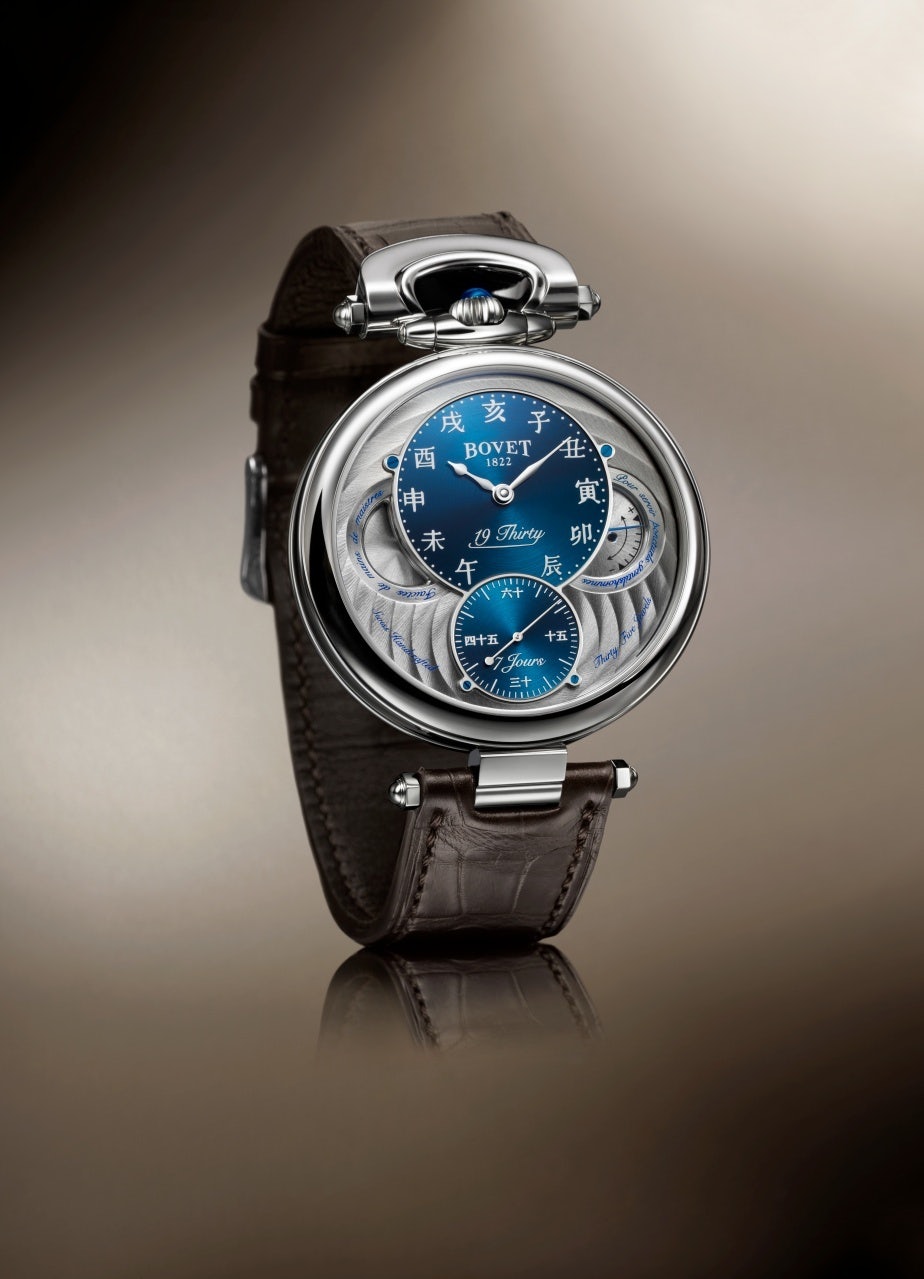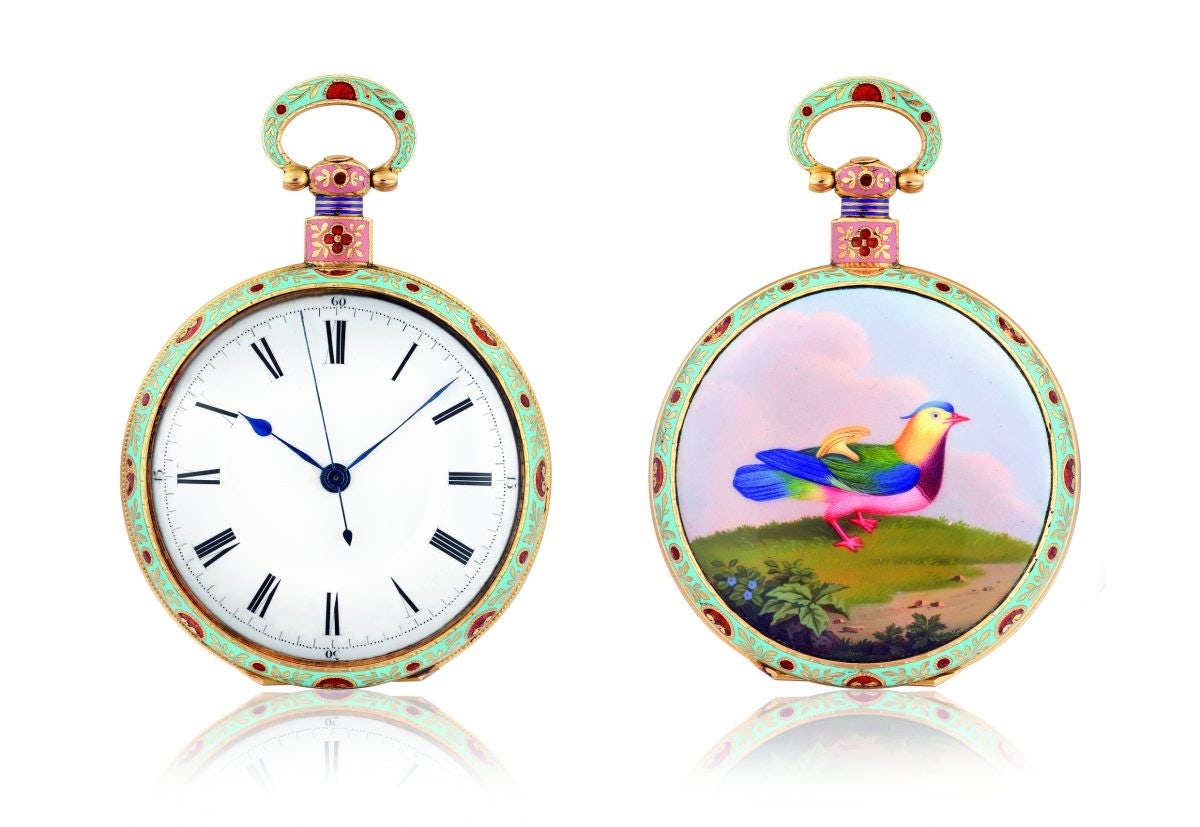One would be hard pressed not to enjoy a conversation with Pascal Raffy, owner and refounder of Bovet Fleurier, a Swiss haute horlogerie maison originally founded in 1822 and reestablished by Raffy in 2001. He is convivial and passionate to the point it's almost contagious. Given the oft stayed demeanor of the Swiss (though Raffy was born in Lebanon), he is, as they say, a breath of fresh air.

As for Bovet, which produces a modest 2,000 to 3,000 watches annually, from a historical measure, there is simply is no Swiss watch brand more historically tethered to China—so much so that the word for “watch” in Mandarin is a derivation of “Bovet” itself.
After making a princely sum in pharmaceuticals, Raffy decided to shift his priorities and focus on his family rather than professional endeavors. However, the entrepreneurial spirit is a curious thing, and during this sabbatical of sorts Raffy (who had acquired watch fever as a child from his grandfather) decided to resurrect the house of Bovet—then a sleeping beauty in need of a deep pocketed investor to restore it back to its former glory, which in due time he did.
The contemporary 21st-century Bovet wristwatches certainly harken back to the ornate Continental and Oriental stylings of the 19th-century pocket watches, with complicated movements, tourbillons, heavy engraving and miniature enamel painting. However, these homages that range from CHF 16,000 to 800,0000 (though a true bespoke unique piece could go much higher) are seemingly not to everyone’s taste, as noted watch author and journalist Jack Forster remarked, “[The Bovet] designs are rather idiosyncratic and tend to strike the average watch aficionado as odd or even eccentric, thanks to the company's preference for creating watches that resemble pocket watches that have been converted to wristwatches.” Opinions of course differ, and as such, Bovet enjoys a particularly loyal following and some remarkably ardent collectors.
One could write a book on Bovet's China connection, and Raffy contributed to one, The History of Bovet and China by David Chang. The abridged version goes something like this: In 1818 Edouard Bovet departs London in April and arrives in Canton by mid-August where he immediately sells “four watches for the sum of CHF 10,000 representing the equivalent of one million dollars today.” Four years later, with Edouard in China, his brothers, Alphonse and Frederic in London, and a fourth brother, a watchmaker, Gustave, in Fleurier, Switzerland, all band together and founded the House of Bovet which eventually saw the emperors of China as patrons. The maison enjoyed varying degrees of success until 1864 when war, competition from the likes of Ilbery of London and Vacheron Constantin, as well as knock-offs all took their collective toll and forced the Bovet family to sell off their manufacture and marque. The trademark traded hands many times over, and prior to Raffy there had not been a new Bovet timepiece released since the 1950s.
Raffy spoke to Jing Daily on the phone to discuss China then and now, and why 25 percent of one’s sales in China is simply perfect.
Bovet’s historic connection to China is unparalleled to any other Swiss watch brand, yet today, while it does have seven points of sale, Bovet doesn’t have a flagship boutique in Hong Kong or mainland China. Is that apt to change?#
Mr. Jimmy Tang of The Prince Group in Hong Kong is such a lover of watchmaking and the images of Bovet. We talk about fine pieces, not watches. We are planning in the near future [to open a flagship boutique], in mainland China, however, when it comes to our offices and team in Hong Kong, no one is better connected to Chinese collectors.
Is adding a greater retail presence in Greater China what you were referring to during your 2015 interview with Brice Lechevalier of World Tempus, when you stated that 2016 would be your relaunch year in China?#
We are present in Bejing, Shanghai and Wuhan—ours is a philosophy of quality, not quantity. I am looking to replicate [the Bovet] experience with a maximum of eight points of sale in China. I don’t want Bovet to become the supermarket of watches. I don’t want to experience discounting—it is not about how many watches that you sell each year.
In that same interview, you remarked that Asia Pacific represents only 20 percent of Bovet's sales—has that changed in the past two years?#
We are very lucky because in 2016 we maintained that average and would like to in 2017. Depending on the collections and the taste of the collectors it averages 20 to 25 percent. I am very happy with this; I don’t want to rely on one region of the world. It is good to have the beautiful balance, thanks to the performance of our team. [Our goal for China] in 2017 [does not exceed] 23 percent [in total sales].
Additionally, you’ve mentioned that women's watches make up 40 percent of sales. Is that same gender split reflected China?#
No, in Asia, we are about 30 percent ladies, 70 percent gentlemen.

Please tell me about#
The History of Bovet and China#
, a book written by David Chang and your own involvement in the project?#
I love things to happen by pure destiny. The history came through a former partner that I spoke to about doing a book to bring education to our collections. David Chang did not write it through a mundane perspective—he knows the substance of what Bovet was making and the contribution of the House of Bovet to transmit Swiss culture in mainland China in the 19th century. This book is in fact the panorama for the first watchmaking House of Bovet. The House of Bovet has always been open to other cultures to try to understand them, not to stay stagnate in one way. I am very proud of the owner of a house. Luxury and artisan start with passion, to bring emotion and a solid education, and to make people understand that other cultures can bring happiness and an open mind.
At the Christies Geneva November 2013 watch auction you acquired a rare open-face watch made by Bovet around 1835, featuring an enameled miniature Mandarin duck motif. Where is that watch displayed today?#
My personal [watch] collection starts from 1825. The Mandarin Duck is always with me. The symbol of the duck is loyalty, bravery, and honesty. With those you can be successful
Do you share the sentiment and optimism of other watch industry leaders that it is time to refocus on China?#
Building our comeback in mainland China for the next five years, [will] bring us the huge stability of growth. Regardless of what I want to do, I want to make pure art. Luxury has to be in small numbers—quantity is not the essence. I want to keep exclusivity. The way of my perspective in the Chinese market is just not the same as those [watch manufactures] doing bigger numbers. We are building this with wisdom, tranquility, and keeping to true limited editions.
